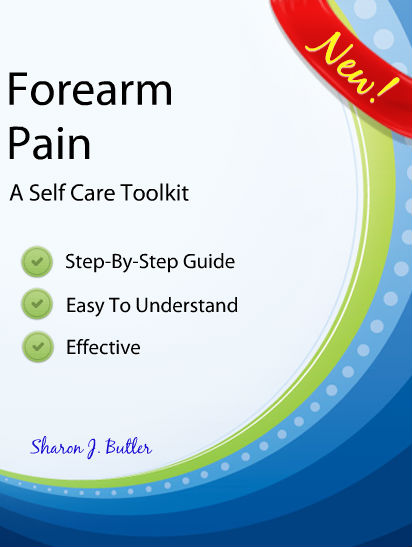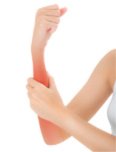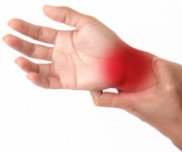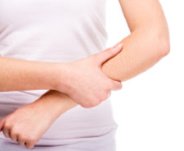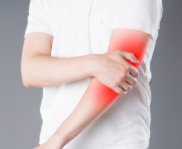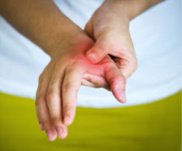Forearm Pain
What Causes Forearm Pain?
Pain in your forearms is caused by adhesions, or stuck spots, in the Fascia that is found throughout the forearm muscles. Adhesions prevent your forearm muscles from contracting fully, making them feel weak.

Forearm Muscles Do
Three Things:
It is a good idea to learn as much as you can about the conditions that are leading to your symptoms.
The muscles of the forearms do three things:
1. They close the fingers into a fist and then open them again
2. They move the wrist up, down and tilt it to the side
3. They rotate the forearms from a palm down to a palm up position
Visit the Forearm Pain Symptoms page to explore this important subject.
What Causes Forearm Pain To Get Worse?
When you have forearm pain, it indicates that you have done one or more of these movements to excess and it has caused strain.
Here are some common movements that fall into this category. You might find the cause of your pain here, or you might have developed another pattern that is leading to the pain in your forearms. Use your imagination and pay attention to how you use your hands and arms in the course of a day to figure out why you are experiencing pain.
- Typing on a keyboard
- Gripping an object like a tool, a handlebar, a book, a tablet, a cell phone, a barbell or hand weight, a tennis racket, a golf club
- Needing to use precision with an implement like a dental tool, a scalpel, a paint brush, a knife
- Working with your wrists bent up or down for any reason
- Tilting your wrists to the side to meet the keys of your keyboard
Any combination of these movements will accelerate the changes in your forearm muscles even more.
For example, if you are a dental hygienist, you will probably find that you have to grip your instruments firmly and at the same time, put stress in all your arm muscles to keep your hands steady. In addition, you will likely have a bent wrist and elbow as you work with your patient. Three sources of stress going on simultaneously!
When you perform stressful movements and holding patterns over and over in the course of a day, the fascia in your forearms begins to change consistency to help the muscles carry the work load. The fascia becomes thickened and sticky and begins to glue layers of neighboring muscles together. This in turn begins to inhibit or restrict the movement of the muscles required to move your fingers or wrist. Now they all have to work harder because they are dragging along their neighbor muscles with each movement.
The result? PAIN, FATIGUE, WEAKNESS
Visit the Forearm Anatomy page to learn more about the muscles that are responsible for your kind of forearm pain:
- Pain on the back of your forearm (in line with the back of your hand)
- Pain on the inside of your forearm (in line with your palm)
- Pain on the outside of your forearm, anywhere from the wrist to the elbow (in line with your little finger)
- Pain near your elbow
Once you understand how each of these muscle groups work, you can better identify the movements that are responsible for your pain. Limiting those movements can help reduce the strain in your forearms.
How Do I Heal My Forearms?
To fully eliminate your pain, you must release the adhesions or stuck places that are locking your muscles together. Once released, your muscles will move freely again and will no longer cause you any pain. Strength and endurance will be restored.
You can find helpful tips about managing your symptoms on the Forearm Pain Self Care page.
Click the block below that most closely matches your injury for more information and to find the Toolkit we offer to help you in your recovery.
